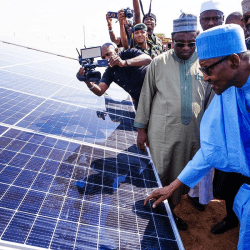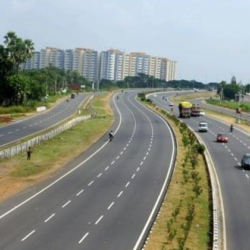🌍 Deday Wind Farm Project: Ethiopia’s $288.9M Clean Energy Expansion
The Deday Wind Farm Project in Ethiopia is a $288.9 million investment set to generate 134 MW of renewable energy. Discover its location, benefits, and investment potential.
1. Deday Wind Farm
The Deday Wind Farm Project, also known as Dicheto Wind Farm, is a key initiative in Ethiopia’s renewable energy expansion. Located in Elidar Woreda, Afar Region, the project is expected to generate 134 MW of clean energy, reinforcing Ethiopia’s commitment to green power.
With an estimated cost of $288.9 million, the project follows a Public-Private Partnership (PPP) model under a Build-Operate-Transfer (BOT) framework. This guarantees efficient development, foreign investment, and long-term sustainability.
2. Location and Geographic Significance
The Deday Wind Farm is strategically positioned in the Afar region, close to major trade routes.
Key Geographic Features:
📍 Location: Elidar Woreda, Afar Region
📍 Distance from Semera (Afar Capital): 70 km
📍 Near National Highway #1: Major route from Djibouti to Addis Ababa
📍 Elevation: Suitable for wind energy production
Why the Afar Region?
✔ High Wind Speeds: Ideal for continuous energy generation
✔ Close to Djibouti Trade Route: Potential for cross-border electricity supply
✔ Supports Rural Electrification: Expands energy access in remote regions
3. Project Scope and Technical Specifications
Key Features of the Wind Farm
- Capacity: 134 MWac
- Land Area: 8,500 hectares
- Infrastructure: New High Voltage (HV) transmission line
- Technology: Advanced wind turbines for efficient energy conversion
The energy generated will connect to Ethiopia’s national grid, improving energy reliability in the Afar region and beyond.
4. Investment and Financial Structure
The total investment cost of $288.9 million includes:
✔ Wind turbine procurement
✔ Infrastructure and site preparation
✔ Transmission and grid connectivity
✔ Operations and maintenance expenses
Potential Funding Sources:
✅ Ethiopian government and public funding
✅ International investors and renewable energy companies
✅ Development banks and foreign financial institutions
5. Procurement and PPP Structure
The project is being developed under a Build-Operate-Transfer (BOT) model, specifically using the Design, Build, Finance, Operate, and Maintain (DBFOM) structure.
Competitive Bidding Process:
- Private sector partners will design, finance, build, operate, and maintain the wind farm.
- After 20-30 years, the project will be transferred to Ethiopia’s government.
- Ethiopian Electric Power (EEP) will oversee procurement through a transparent bidding process.
This approach minimizes public sector risk while ensuring private sector efficiency.
6. Role of Ethiopian Electric Power (EEP)
As the contracting authority, EEP is leading the planning and execution of the Deday Wind Farm Project.
EEP’s Key Responsibilities:
✔ Conducting feasibility studies
✔ Managing procurement and investor selection
✔ Supervising construction and regulatory approvals
✔ Integrating the project into Ethiopia’s national power grid
EEP’s role is crucial in ensuring project success and long-term sustainability.
7. Ethiopia’s Growing Renewable Energy Demand
Ethiopia’s electricity consumption is increasing by 10-15% annually, necessitating renewable energy expansion.
Current Energy Mix:
- Hydropower: 90% (vulnerable to droughts)
- Wind & Solar: 10% (rapidly growing)
By 2030, Ethiopia aims to generate over 5,200 MW from renewable sources, making wind projects like Deday essential.
8. Economic and Social Impact
The Deday Wind Farm will:
✔ Create thousands of jobs during construction and operation
✔ Support industrial and economic growth in the Afar region
✔ Improve electricity access in rural and urban areas
With stable electricity, businesses, hospitals, and schools in the region will thrive.
9. Environmental Benefits
🌱 Carbon-free energy: Reduces reliance on fossil fuels
⚡ Water conservation: Unlike hydropower, wind energy doesn’t require water
🌍 Supports Ethiopia’s Green Economy Strategy
By transitioning to clean energy, Ethiopia is making a global impact on sustainability.
10. Potential Challenges and Risks
⚠ Land acquisition and community concerns
⚠ Project financing and economic risks
⚠ Regulatory and environmental approvals
Proper government policies, investor engagement, and risk management will address these challenges.
11. Current Status and Project Timeline
📌 Feasibility Study: Ongoing (led by EEP)
📌 Bidding Stage: Expected 2025
📌 Construction Phase: 2026-2028
📌 Operational Launch: By 2030
EEP is finalizing feasibility studies before initiating the bidding process.
12. Foreign Investment and Partnership Opportunities
The Ethiopian government welcomes foreign investors in its renewable energy projects.
Investment Areas:
✔ Wind turbine manufacturing & supply chain
✔ Project financing & technical support
✔ Power transmission and energy storage solutions
Incentives include tax benefits, guaranteed power purchase agreements, and infrastructure support.
13. Ethiopia’s Wind Energy Expansion
Ethiopia is rapidly expanding its wind energy sector, with successful projects like:
🌍 Ashegoda Wind Farm (120 MW)
🌍 Adigala Wind Farm (150 MW)
🌍 Dire Dawa Wind Farm (150 MW)
The Deday Wind Farm strengthens Ethiopia’s position as a renewable energy leader in Africa.

1. What is the cost of the Deday Wind Farm Project?
💰 The estimated cost is $288.9 million.
2. How much electricity will the wind farm generate?
⚡ It will generate 134 MW of renewable energy.
3. Who is responsible for the project?
🏢 Ethiopian Electric Power (EEP) is overseeing development.
4. When will the project be completed?
🛠 The project is expected to be operational by 2030.
5. Can foreign companies invest in this project?
🌍 Yes, international investors can participate through competitive bidding.






